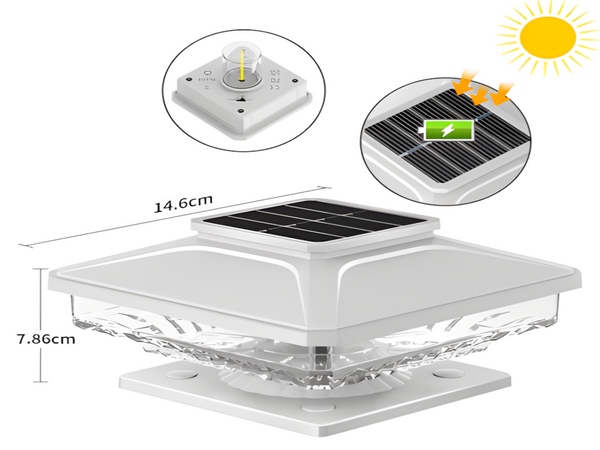
Wind-solar complementary street lights are a combination of wind power and solar power systems. They store the electrical energy generated during the day in battery packs and automatically turn on LED lights at night.
1. Components of Wind-Solar Complementary Street Light System
The wind-solar complementary street light system consists of solar panels, wind generators, wind-solar complementary street light controllers, battery packs, and LED light components.
These street lights can be equipped with different types of wind generators depending on the climate environment. The solar panels use high-efficiency monocrystalline solar cells, greatly enhancing solar energy generation efficiency.
The wind-solar complementary street light controller is the main component within the system, responsible for issuing commands and coordinating the operation of other components. It integrates light control, time control, automatic power tracking, and automatic load shedding, ensuring stable and reliable performance.
2. Working Principle of Wind-Solar Complementary Street Lights
Wind-solar complementary street lights utilize wind and solar energy for power supply and combine the advantages of both energy sources to provide a stable power supply for urban street lights.
These street lights employ high-performance, maintenance-free gel batteries to supply ample power, ensuring the LED lights remain operational even during rainy days, thus significantly enhancing system stability.

3. Advantages of Wind-Solar Complementary Street Lights
(1) Energy-saving and environmentally friendly, with no significant electricity expenses post-installation.
Resource-saving and eco-friendly societies are gaining traction. Compared to traditional street lights, wind-solar complementary street lights rely on natural and renewable solar and wind energy, without consuming any non-renewable energy sources or emitting polluting gases into the atmosphere, effectively bringing pollution emissions down to zero. Over time, this significantly contributes to environmental protection while eliminating subsequent electricity costs.

(2) Eliminates the need for cable installation and extensive power supply infrastructure. As a distributed independent power generation system, localized failures do not affect the overall functionality and are not reliant on widespread electricity availability. Conventional street lights connected by cables may cause disruptions due to individual component issues; however, wind-solar complementary street lights avoid such problems. This leads to substantial savings on cable costs and mitigates the risk of cable theft. Installing street lights in remote areas where the power grid is not accessible can be costly; theft can severely affect overall power output. With wind-solar complementary lights, each unit operates independently, eliminating cable connections, so even if theft occurs, other street lights can function normally, minimizing potential losses.
(3) Intelligent control, eliminating the need for manual operation.
Wind-solar complementary street lights are controlled by an intelligent controller, which can operate in either time-based or light-sensitive automatic modes. They effectively utilize wind and solar energy for power supply.
For inquiries regarding solar street light prices, you are welcome to get in touch with us.



